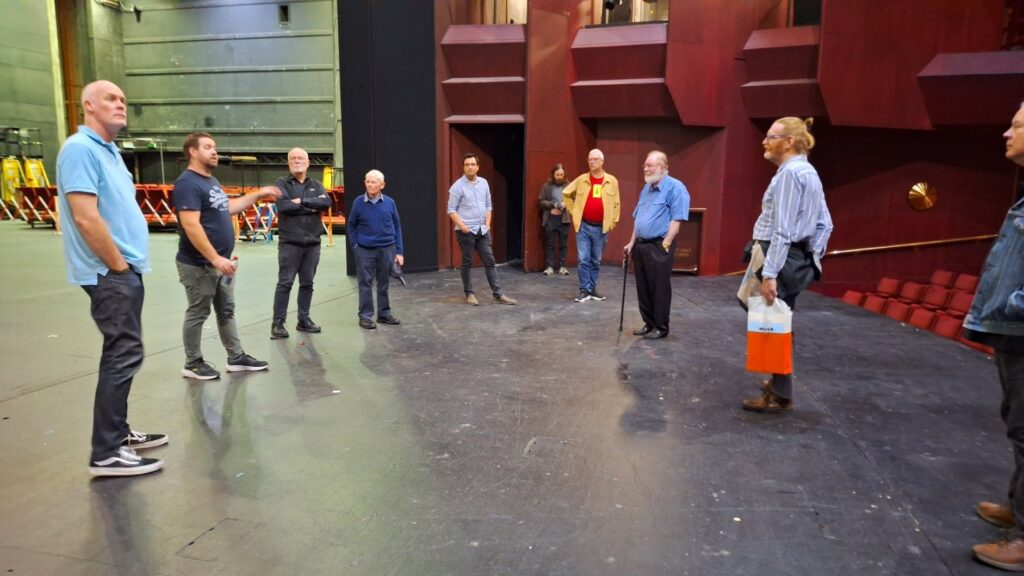On Monday 5th February, the Melbourne Section of the AES held a members-only tour of the State Theatre at the Melbourne Arts Centre.
Due to space limitations in some areas of the facility, we were limited to a maximum of 12 people. It was decided to restrict this event to members, and the quota was filled within a few days of the email notice going out.
As the venue is closing to undergo major renovations next month after 40 years of hosting world-class performances, it was seen as a good opportunity for one last look at the venue as it stands. The hope is that we can return in three years’ time post-renovations to appreciate the changes and improvements.
Our host for the evening was Nick Walker, the Arts Centre Manager of Sound and Vision.
Our AES Committee member, Rod Brown, who arranged the tour, was a founding Arts Centre A/V staff member and was also on hand to give us some interesting background on the early days of the venue, providing some details that were even news to Nick.
We assembled at the stage door lobby, where Nick explained the theatre’s history and the areas we would be visiting.
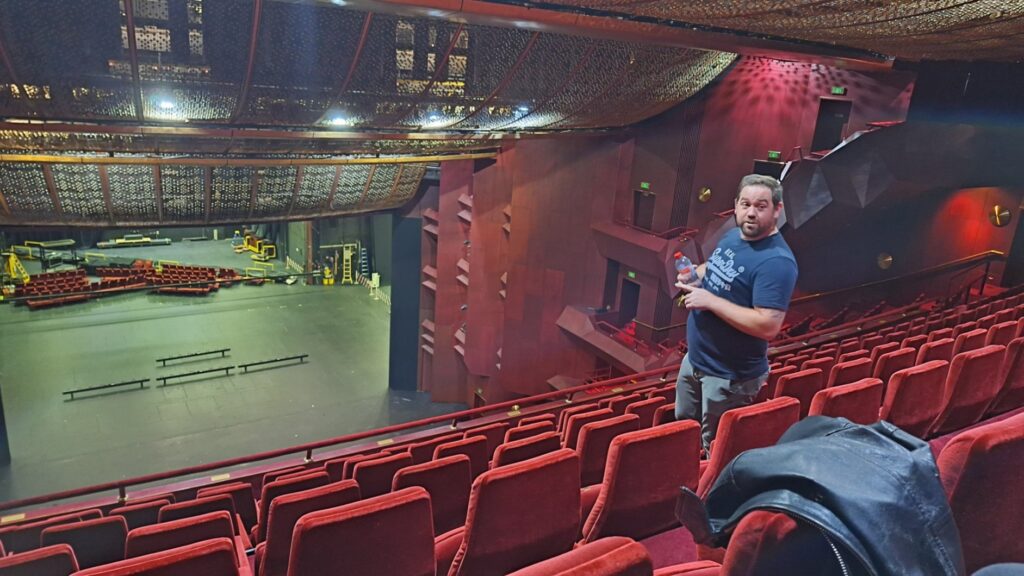
He then took our group into the auditorium, describing the configuration, sound reinforcement, and lighting.
He broadly covered some areas where it was hoped that the refurbishment would improve the experience for the audience. He also pointed out the lighting grid hidden above the iconic golden ceiling. He indicated that post-renovation, the sound reinforcement loudspeakers would be supplemented by in-seat speakers.
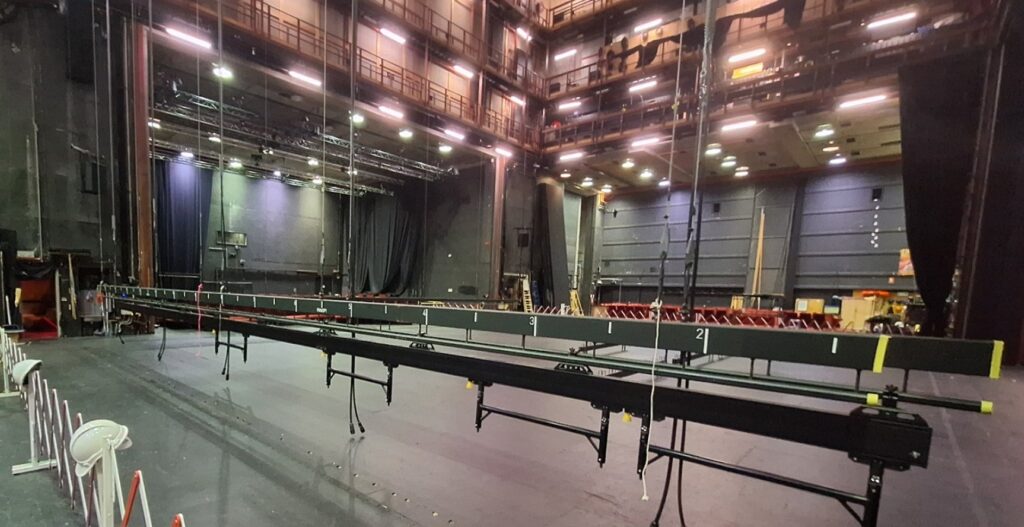
We then moved down to stage level, where from the wings, we could observe part of the flying system that was lowered to stage level as they prepared for the next show Rent:The Musical.
We were then able to move on to the stage and observe the immensity of space available on stage, as well as the headroom above for the recently upgraded flying system to deploy.

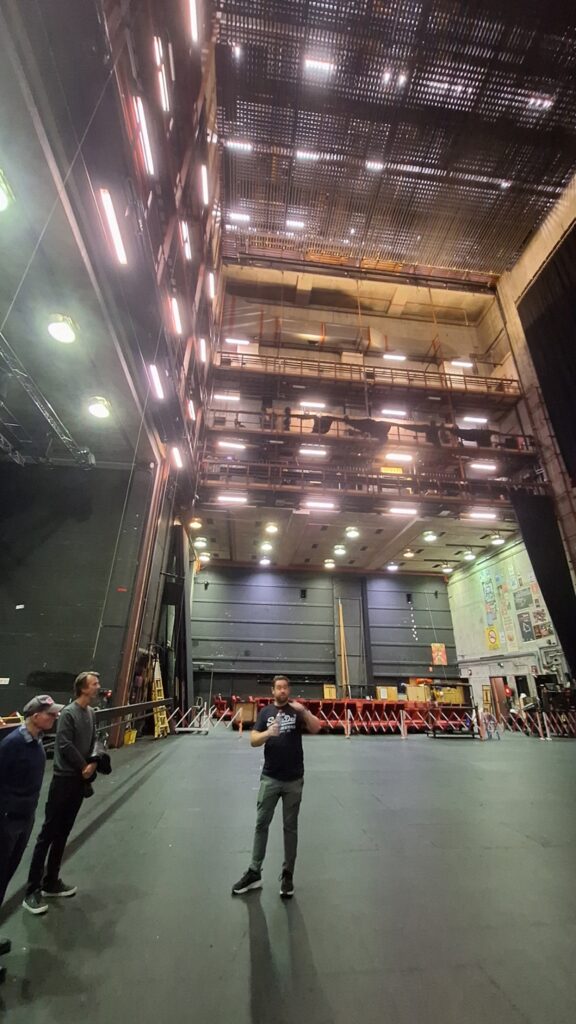
Nick then showed the Stage Manager’s desk, from where a production is controlled, emphasising the key communication tools available such as the Riedel Bolero wireless belt-pack voice communication system that is used across all production staff, and the cue-light system – explaining that cue-lights are still the mainstay of talent cueing.
He pointed out one of the Riedel active antennas high up on the wall, explaining that these are dotted throughout the venue to give the desired coverage for the comms system.

He went on to describe how in the 40-year life of the venue, new technologies had been deployed over the top of the original design, sometimes replacing, sometimes supplementing the existing systems; resulting in a mix of technologies. He asserted that the renovation would give them the chance to start with a clean slate. Adjacent to the SM Desk we were shown a small rack room where audio lines to the stage and the audio control room at the rear of the auditorium terminated and could be cross-patched to suit a specific stage setup. These racks also contained the “digital snake” connecting the analog inputs/outputs to the main mixing console via a fibreoptic loop system.

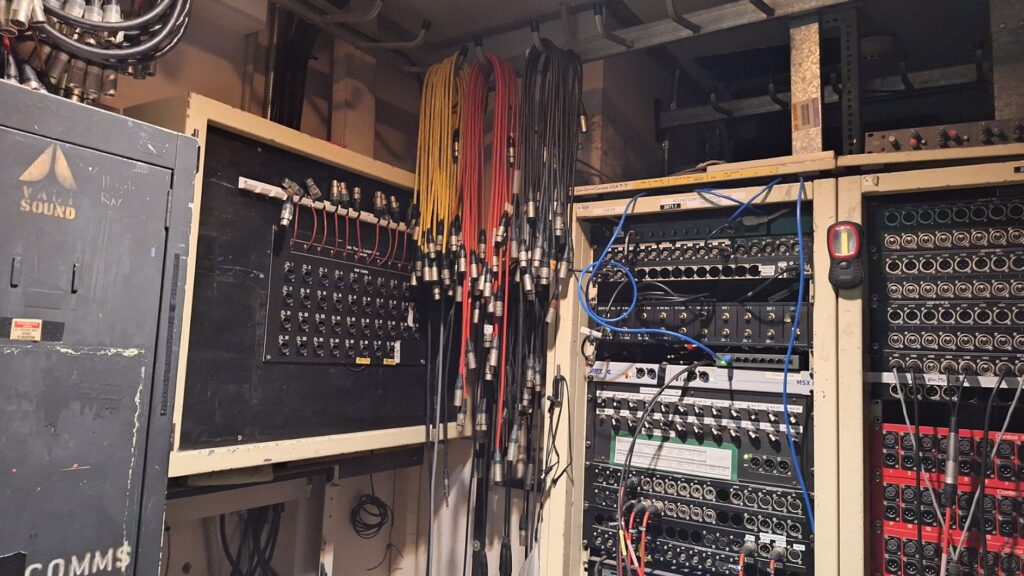
There was also the cue-light patching system here, where specific light channels could be routed to the appropriate location.
Nick also explained that we were now six floors below street level, and both Nick and our own Rod Brown explained the challenges of the damp river-side site, where extensive waterproof membranes, pumping systems, and sacrificial anodes were deployed to keep nature at bay and prevent corrosion. Nick told us that the sacrificial anodes had been replaced several times in the life of the building, and the protection system was to be completely reworked as part of the renovation. He noted that one benefit of being so far underground was that the stage area was completely free of RF interference to the radio microphone and wireless comms systems.
Moving to the stage area, Nick explained that the front area of the stage was the orchestra pit, which was covered when not needed. He explained that the orchestra pit had been expanded in recent years to provide more physical separation between musicians to address musicians’ concerns about potential hearing damage.
The next stop on our tour was a small technical space where a video recording system was installed to permit a reference recording to be made of performances. Nick indicated that it was for reference only, not broadcast quality and, although it was capable of 4k and 1080p resolutions, most recordings were done at 1080i to minimise latency issues.
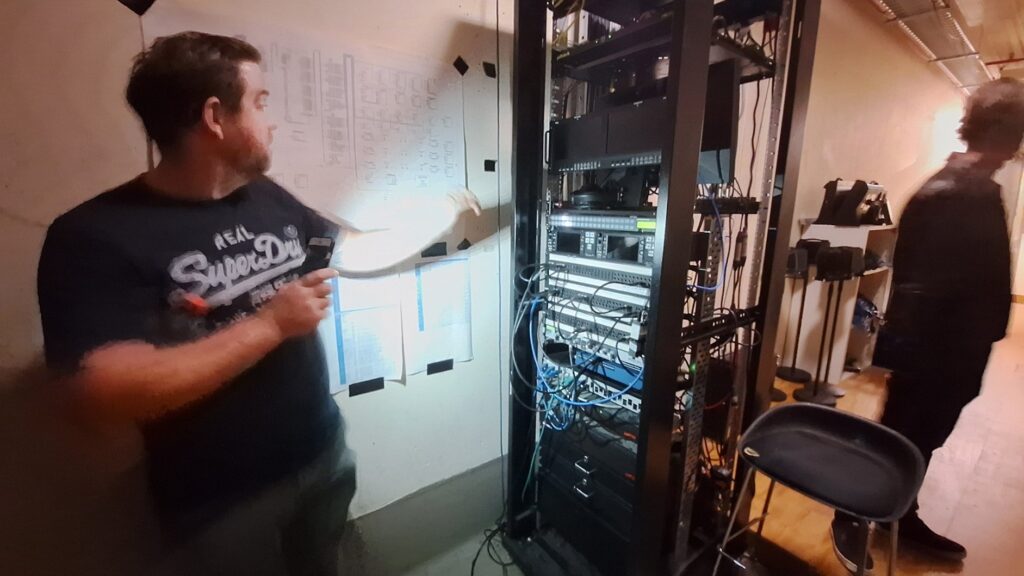

A short distance from the video recording area was another rack containing the Riedel Bolero wireless comms core equipment where the Bolero AES67 (Audio over IP) signals are routed to/from the active antennas.
We then moved back into the auditorium and to the mixing position at the rear, where a Digico SD10 was installed as the primary mixing console. Nick explained the role of the console in providing sound reinforcement and stage foldback.

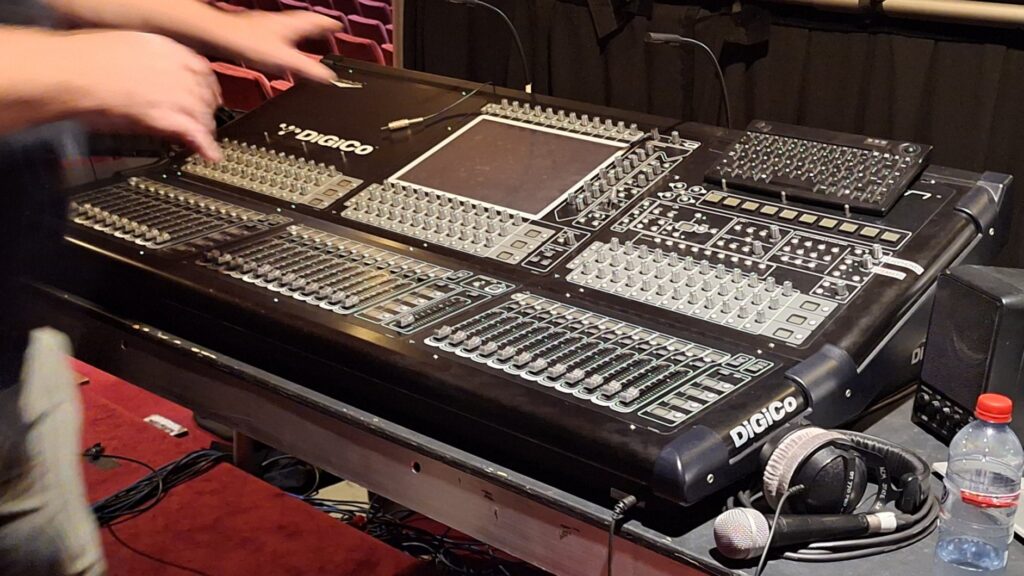
He indicated that locating the main mixing position within the hall has significant benefits, but it takes up space that could be used for seating, which reduces ticket sales, so it is not always possible. Nick indicated that there was a separate Audio Control Room overlooking the auditorium, and this was sometimes used in cases where they were only providing stage foldback, and sound reinforcement was not being used.
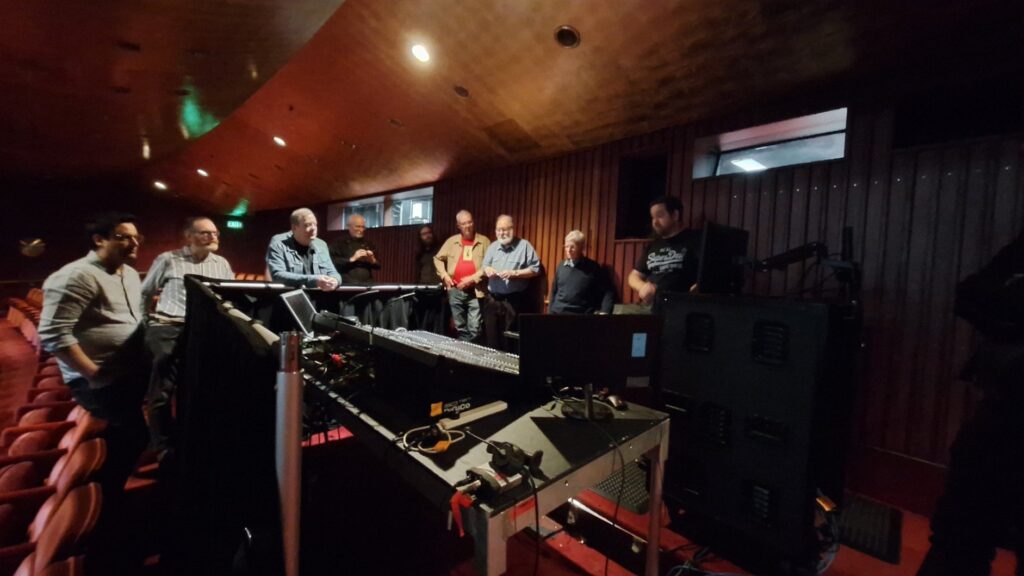
Nick then explained the history and challenges of the rear wall design where optimising the design to provide a good on-stage sound for the performers had been at the expense of introducing some slapback at the mixing position and a few other spots in the auditorium.
We finished our tour at the Audio Control Room which has a space for the Digico, and were able to better examine the fibreoptic loop that carries the digital stage box connections to the mixing console.

We thank Nick for his hospitality and wish him and his crew all the best during the disruptive renovation process. May all their time and financial budgets be met and may they end up with a facility that they, their productions, and the audiences deserve.
Related Links:
The State Theatre at the Arts Centre: https://www.artscentremelbourne.com.au/Visit/Theatres-and-Spaces/State-Theatre
AussieTheatre.com story on the redevelopment: https://www.aussietheatre.com.au/news/work-begins-on-arts-centre-melbournes-iconic-theatres-building
Riedel – beltpack intercom: https://www.riedel.net/en/products-solutions/intercom/bolero-wireless-intercom
Digico – digital mixing console: https://digico.biz/consoles/sd10/
Peter Smerdon
10Feb2024


